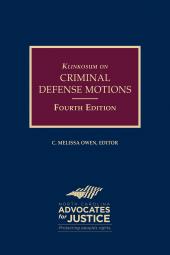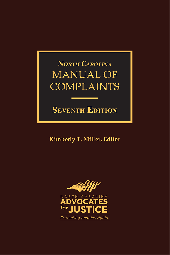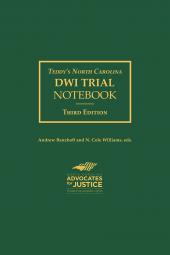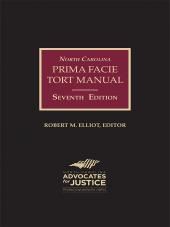Klinkosum on Criminal Defense Motions
Select a format
 International Order Inquiry
International Order Inquiry
Select subscription type
Terms & conditions
Subscribers receive the product(s) listed on the Order Form and any Updates made available during the annual subscription period. Shipping and handling fees are not included in the annual price.
Subscribers are advised of the number of Updates that were made to the particular publication the prior year. The number of Updates may vary due to developments in the law and other publishing issues, but subscribers may use this as a rough estimate of future shipments. Subscribers may call Customer Support at 800-833-9844 for additional information.
Subscribers may cancel this subscription by: calling Customer Support at 800-833-9844; emailing customer.support@lexisnexis.com; or returning the invoice marked "CANCEL".
If subscribers cancel within 30 days after the product is ordered or received and return the product at their expense, then they will receive a full credit of the price for the annual subscription.
If subscribers cancel between 31 and 60 days after the invoice date and return the product at their expense, then they will receive a 5/6th credit of the price for the annual subscription. No credit will be given for cancellations more than 60 days after the invoice date. To receive any credit, subscriber must return all product(s) shipped during the year at their expense within the applicable cancellation period listed above.
The total price includes the product(s) listed in the Order Form and any Updates for a limited period (minimum period of 30 days) after the order is placed ("Order Window"). Shipping and handling fees are not included in the grand total price.
All shipments may be returned, at subscribers' expense, for full credit of the Price within 30 days of receipt.
Shipments may not be returned, and no credits will be issued, more than 30 days after receipt.
After the Order Window, subscribers will receive notice of Updates along with the then-current grand total price and order process as Updates become available. Subscribers will only be shipped those Updates they specifically request.
Product description
View a sample of this title using the ReadNow feature
Klinkosum on Criminal Defense Motions provides a practical, authoritative, and comprehensive overview of motions practice in North Carolina. It discusses the common types of motions typically filed by criminal defense attorneys, along with practical guides and forms to help attorneys determine which motions to file and what sources to consult in litigating a criminal case.
With this practical guide you can:
- Test the legal bases for the prosecution's case
- Limit the evidence that will be introduced by the state
- Limit the charges that the defendant may be tried upon
- Discover and expand the evidence the defendant can present at trial
- Strengthen the defendant's legal claims
- Provide a record for possible appellate review
eBooks, CDs, downloadable content, and software purchases are noncancelable, nonrefundable and nonreturnable. Click here for more information about LexisNexis eBooks. The eBook versions of this title may feature links to Lexis+® for further legal research options. A valid subscription to Lexis+® is required to access this content.
Table of contents
CONTENTS
Chapter 1. CRIMINAL COURTS MOTIONS PRACTICE IN NORTH CAROLINA
I. Introduction
II. Form and Filing
III. Motions to Continue
IV. Motions Practice in District Court
V. Evidentiary Hearings
VI. Sample Certificate of Service
VII. Sample Motions
Chapter 2. BAIL AND PRETRIAL RELEASE
I. Introduction
II. The Law
III. Modification of Pretrial Release
IV. Bond Modification (Reduction) Motions
V. Sample Forms and Motions
Chapter 3. MOTIONS TO DISMISS CRIMINAL PLEADINGS
I. Introduction
II. District Court Pleadings
III. Superior Court Pleadings
IV. Related Superior Court Filings
V. Content of a Proper Criminal Pleading
VI. Motions to Dismiss Criminal Pleadings
VII. Motions to Dismiss Indictments Directed at Grand Jury Proceedings
VIII. Sample Motions
Chapter 4. MOTIONS FOR DISCOVERY
I. Introduction
II. Goals of Discovery
III. Ethical Considerations
IV. Statutory Discovery
V. Constitutional Discovery
VI. Other Constitutional Discovery Rights
VII. Sample Motions
Chapter 5. PREVENTING AND LITIGATING THE ILLEGAL DESTRUCTION OF EVIDENCE
I. Introduction
II. The State’s Responsibility to Preserve Evidence
III. Successful Cases
IV. Common Elements of Winning Trombetta/Youngblood Claims
V. Motions to Preserve Evidence
VI. Sample Motions
Chapter 6. COMPETENCY TO STAND TRIAL
I. Introduction
II. Competency to Stand Trial vs. Insanity
III. Ethical Considerations
IV. Constitutional Considerations
V. The Standard for Determination of Incompetent to Proceed
VI. Incompetent to Proceed But Not Committable: The Statutory Black Hole
VII. Sample Motions
Chapter 7. MOTIONS TO OBTAIN EXPERT ASSISTANCE
I. Introduction
II. The Right to Expert Assistance
III. Motions for Expert Assistance
IV. Illustrative Cases
V. Interpreters
VI. Sample Motions
Chapter 8. MOTIONS TO SUPPRESS EVIDENCE
I. Introduction
II. The Exclusionary Rule
III. The Motion to Suppress
IV. Challenging Search Warrants and Illegal Searches and Seizures
V. Challenging Illegal Confessions
VI. Challenging Illegal Identification Procedures
VII. Sample Motions
Chapter 9. JOINDER AND SEVERANCE
I. Introduction
II. Joinder and Severance of Offenses
III. Joinder and Severance of Defendants
IV. Procedures for Motions for Joinder or Severance
Index
 Lexis Nexis
Lexis Nexis 


